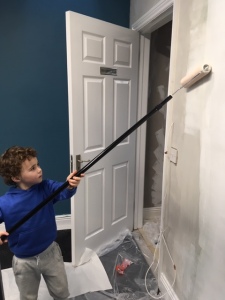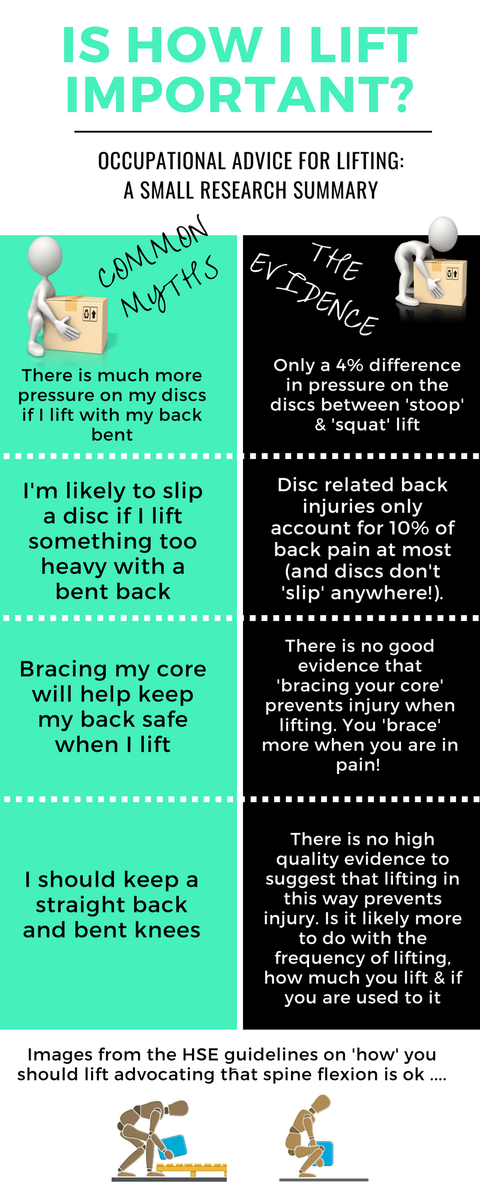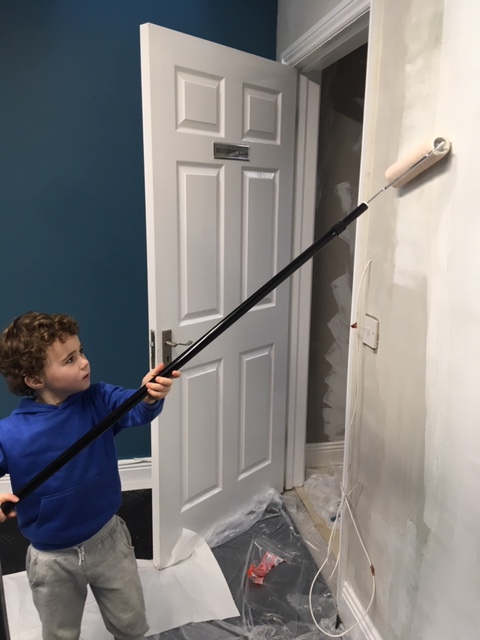Over Christmas the clinic got a much needed makeover; a fresher look and more space allowing for movement and exercise. As it was Christmas I was also getting in as much family time as possible so had plenty of “help”. By this I mainly mean wiping splashes of paint off the wooden floors (not all the kids doing I should add). Amidst the revamp was the addition of a weights rack along with some kettle bells for strength work and on loading up the jeep one evening I noticed my eldest (5 years old) without a thought stoop and lift a 14 kg kettle bell with a bent back that would make the manual handling community weak at the knees. I have to confess my first thought was similar. But I held my tongue as he proudly shuffled from the garage and plonked the weight by my side, narrowly missing my toes. “Right let’s go”, he said.

“Keep your back straight”, “Lift with the legs, not the back”, “Don’t round your back.” Anyone who’s ever done a manual handling course will be more than familiar with such instructions. You’ve likely been shown images of a worker reaching forwards and lifting a big heavy box with a big red “X” across it. Or an image of a spine with a big red bulge like a jam donut oozing out the side. (By the way discs do not slip and they certainly are not red). You’ve probably constructively critiqued each others way of lifting small square boxes, a “tick box” exercise to formally document your ability to lift such standard square boxes and cover any potential work related injury claims down the line. And you complete this formality, go home, arrive to work the next day and…forget about it all. But it’s fine. You don’t even have back pain.
So who says we need to lift a certain way? Interestingly, the origins of manual handling date back to the 1940’s during World War II. During this period there was a huge increase in the numbers of people working in factories in roles they would have previously been unaccustomed to. And with the spike in unfamiliar workload came a spike in incidence of workplace related injuries. Like the uptake of any unfamiliar activity or sport there is an initial increase in the risk of injury. In response to this in 1942 The US Department of Labour introduced the first weight restriction for lifting, a document entitled “A guide to preventing weight lifting injuries”. Men were capped at 50 lbs and women at 25 lbs (how sexist!). And so began this endless battle trying to prevent back pain in the workplace leading to the first manual handling course in the 1980’s. And this supposed spine-sparing model is still the foundation on which manual handling training is based today. So how are we getting on with this battle against back pain? You might be surprised to hear that not much has changed.
So why such little progress? The foundation on which manual handling is built is from biomechanical research – the way the body mechanically moves. Now I love biomechanics. Sometimes it’s easier when there is a mechanical explanation for things hurting or indeed getting better. Some of this, now somewhat dated, research tells us that a combination of a bent spine along with higher repetitions of compression produces disc herniation. And this is what we all would think: more compression more often to those squishy discs equals more risk of a disc protrusion right? Well maybe so. But a lot of this research is fundamentally flawed. Firstly there was no consideration to the other contributors to back pain (psychological and social). And secondly much of this research was based on animal models and cadavers artificially put under loads in mechanical devices. What it doesn’t take into consideration is that a living organism with living tissue has the ability to adapt to load. More recent research would suggest that bending is in fact good for discs (at least living discs!) by moving nutrients around the disc (Adams 1985). A variety of movements is also beneficial in the same way to promote transportation of nutrients around the disc (Van Dieen 1999). And of the argument of stooped versus squat lifting technique when compared there has shown to be very little difference (less than 4%) in pressure of the intervertebral disc (Dreischarf 2016). This is a positive adaptation for the disc distributing pressure around the entire area rather than avoiding a certain range of movement. And here we have the biggest fault of manual handling with back pain – the avoidance of bending.
Of back pain related injuries approximately 1% are serious pathology. Another 8-10% are a disc pathology with protrusion causing typical radiculopathy or symptoms such as sciatica. The rest (almost 90%) is just your run of the mill non specific low back pain. Not to down play ones pain as each persons pain is their own individual pain experience but this means it is likely not serious pathology. Yet the entire manual handling prevention strategy is based around that tiny 8-10% percent that have a true disc pathology. And yet everyone on the manual handling course is being taught to lift in a supposed spine saving position, in actual fact teaching mostly healthy people how to lift the way people who are in pain lift. People in pain are stiff and rigid. They avoid bending so the muscles around their spine tighten up as a defence mechanism. They brace themselves in anticipation of pain. So let me repeat that: on manual handling courses we actually teach pain free people to lift the same way people in pain lift. But these people are not in pain. I’m all for prevention of injuries but there’s no where stating this approach stops back pain. We know that most people (with or without manual handling training) will lift with a flexed spine anyway. But what they are left facing is the dilemma if they do (and likely will) experience a future episode of back pain. Is it because I lifted incorrectly? Did I not brace my spine sufficiently enough before lifting? Did I lift with straight knees? They are left with a fear of what they think might have caused their pain and of what correct/incorrect lifting is. But there is no correct way.

Infographic from Ash James
Teaching asymptomatic people to lift as if they were in pain makes no sense and while with the best intentions it is likely us health professionals that have created this situation; the language we have used, the analogies and imagery we thought were helpful in our explanation e.g. the disc like a donut. Well now it’s time we changed our tune. And there is progress being made. Thanks to the work of people like Mary O’Keefe, Kieran O’Sullivan, Peter O’Sullivan and Derek Griffin pushing myth busting articles in main stream media we are slowly getting the message out there. Changing beliefs is difficult but then again we used to believe the earth was flat. Manual handling itself is dated. It has not changed since the 1980’s despite more and more evidence emerging. A much more cost effective approach would be education around back pain, promotion of physical activity and general strengthening. And we have a choice with back pain – avoid or confront: we can avoid the movements we think might have caused the painful episode; or gradually confront it with exposure into those painful areas. Now there’s a manual handling course worth taking.
For more information on any of the issues addressed throughout this article please contact Rob at mccabephysiotherapy@gmail.com, Twitter , Instagram and Facebook or visit http://www.mccabephysiotherapy.com
Rob McCabe MISCP
Chartered Physiotherapist
MSc Physio, BSc Sport Science and Health, MSc Sports Physiotherapy,
Orchard House, Moorefield Rd, Newbridge, Co. Kildare

